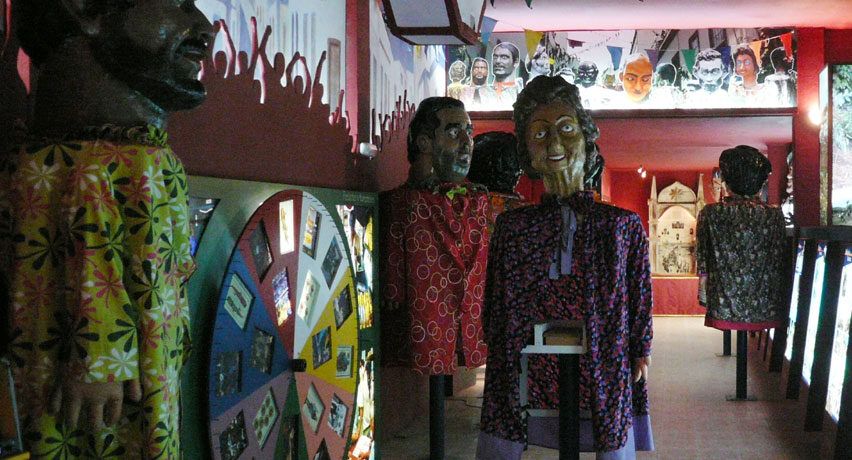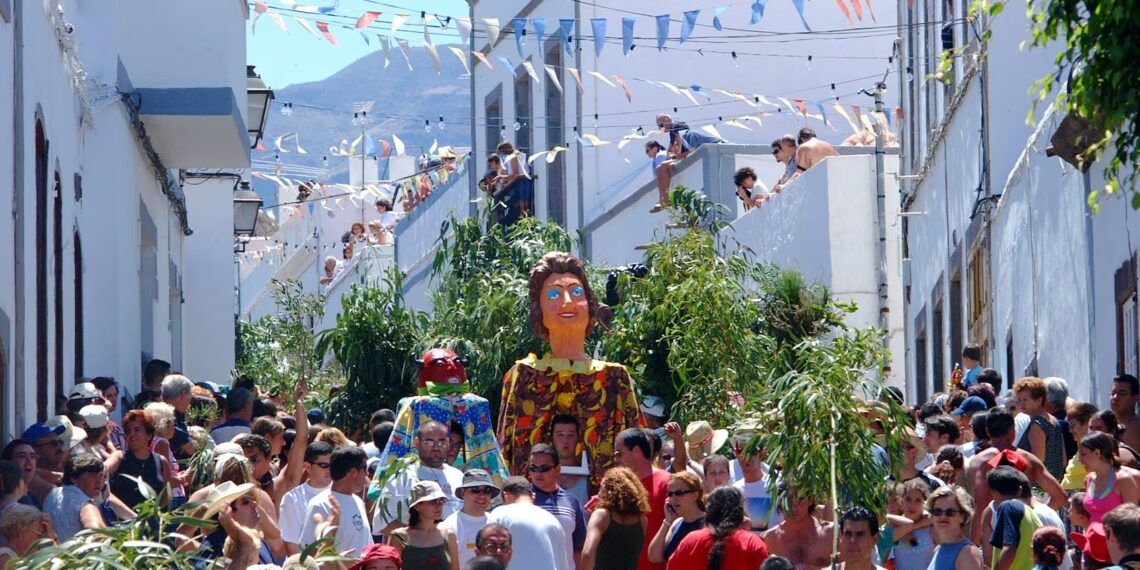E
very August, the island of Gran Canaria comes alive with the lively and colorful celebration of La Rama (The Branch). This traditional festival, deeply rooted in Canarian culture, attracts locals and tourists alike to participate in its joyful festivities. From the rhythmic beats of drums to a lively procession through the streets, La Rama provides a unique experience that showcases the island’s rich heritage.
La Rama is celebrated annually on August 4th, in honor of the Virgen del Pino, the patron saint of Gran Canaria. The main festivities take place in the town of Agaete, located on the northwest coast of the island, although similar celebrations can be found in other parts of Gran Canaria, too. The highlight of the festival is the symbolic act of carrying tree branches (ramas in Spanish) in a joyful procession accompanied by music, dancing, and traditional costumes.

The origins of La Rama can be traced back to the ancient indigenous inhabitants of the Canary Islands, the Guanches. They celebrated the harvest season by offering branches and fruit to the gods as a sign of gratitude and abundance. With the arrival of the Spanish conquistadors in the 15th century, Catholicism became the dominant religion in the Canary Islands, and many indigenous rituals were incorporated into Christian celebrations.
Over time, La Rama evolved into a religious celebration in honor of the Virgen del Pino, blending Catholic traditions with elements of Guanche culture. The custom of carrying branches through the streets symbolizes the offering of the first fruits of the harvest to the Virgin Mary, seeking her blessing for a bountiful harvest in the coming year. Today, La Rama has become a cherished tradition that brings together people of all ages to celebrate their common heritage.
La Rama offers a unique opportunity for tourists visiting Gran Canaria to immerse themselves in the island’s vibrant culture and traditions. The festival offers a glimpse into the Canarian way of life, with its colorful costumes, lively music, and spirited dancing. Visitors can join the procession and dance to the rhythms of traditional folk songs, or simply watch from the sidelines as the spectacle unfolds before their eyes.
There is also a museum dedicated to the festival, the “Museo de La Rama”. It is a place where visitors can experience, understand, and enjoy the essence of the celebration. Here, the different elements used for this special occasion are on display: from papagüevos (figures with oversized heads) to other decorations such as lamps and branches.

Located in a recently renovated building with lovely gardens, it was the first museum in the Canary Islands dedicated to a festivity. With their planned expansion to the adjacent building, the museum aims to become a regional center for the study and understanding of the rich variety of fiestas in the Canary Islands as well as their cultural and social significance.
In addition to the festivities in Agaete, tourists should also explore other parts of the island where La Rama is celebrated, such as Teror and Firgas. These smaller events offer a more intimate experience, allowing visitors to interact with locals and learn more about the significance of the festival in different communities.
The Next Celebration
As the next celebration of La Rama approaches, preparations are already underway in Agaete and other towns around Gran Canaria. Visitors can expect a festive atmosphere filled with music, dancing, and traditional cuisine, as well as the chance to witness the spectacular procession of branches through the streets.
For Jews, celebrating La Rama is not only an opportunity to learn about Spanish Catholic celebrations, but also to connect directly with an interesting culture and its people. La Rama has something for everyone, and it is guaranteed to enrich any visitor’s experience in Gran Canaria next August.









